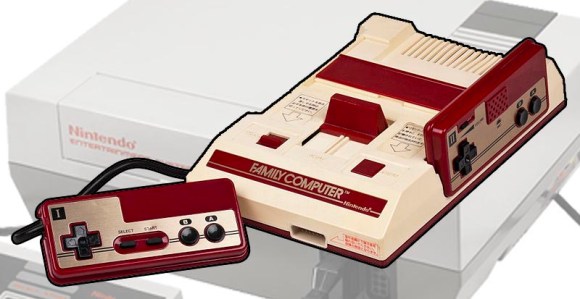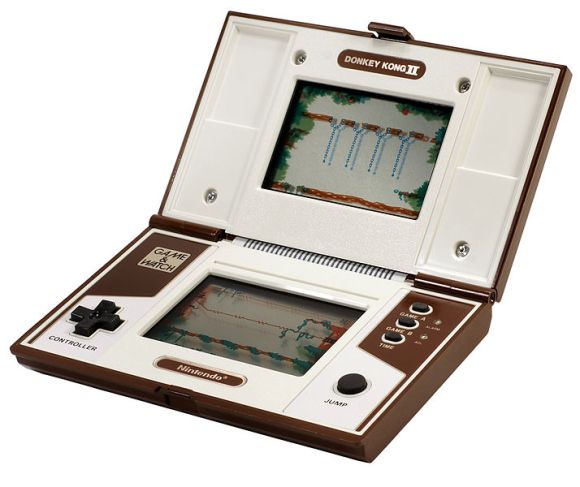 This year Nintendo and fans celebrate the 30th anniversary of the Family Computer (Famicom) game system originally released in 1983. It was the machine that revitalized home gaming worldwide with its later incarnation, the Nintendo Entertainment System (NES). In a story of shocking success, no one was more shocked perhaps than the system’s head developer, Masayuki Uemura who revealed the details of the Famicom’s rocky beginnings in an interview with Shupure News.
This year Nintendo and fans celebrate the 30th anniversary of the Family Computer (Famicom) game system originally released in 1983. It was the machine that revitalized home gaming worldwide with its later incarnation, the Nintendo Entertainment System (NES). In a story of shocking success, no one was more shocked perhaps than the system’s head developer, Masayuki Uemura who revealed the details of the Famicom’s rocky beginnings in an interview with Shupure News.
Work on the Famicom began in 1981, when Nintendo was already having success with its Game & Watch line of portable LCD games that doubled as clocks.
The project was at the behest of then-president of Nintendo, Hiroshi Yamauchi, who wanted “an arcade game that could be played on a home television set.” The task was given to Uemura and his very small team of three people.
Compared to the dozens of people working on Game & Watches, he saw little hope that Nintendo would care enough to embrace whatever he came up with. These machines were cheap and portable giving them a huge advantage over anything he could think of.
“I felt like an already beaten war general who had another mission sent from the top. I still have a notepad I used at the beginning of development. There was no hint of a future at that time, so all I wrote was pessimistic bitching. (laughs)”
[Masayaki Uemura]
Feeling that this project was doomed from the outset, Uemura and team decided to “borrow” some ideas from the already in-use Atari 2600 in the USA. However, that system failed to live up to arcade level quality and didn’t help them at all. But the Atari 2600 did teach them to lower their standards and they abandoned aiming to match the arcade’s quality. However, this project still had its share of hurdles to overcome. Most challenging was creating the system to meet the target retail price of 10,000 yen (2013US$99) or less. They had to make severe cuts to parts in order to get the price down to 14,800 yen ($146). These budget issues helped fuel the rumor that the Famicom’s distinct deep red color was chosen because it was the cheapest available.
“That’s a mistake. (laughs) On the contrary, at first we were going to use a low-cost steel body but we had to replace it with high-strength plastic because it was just too weak. The reason for the red color was simply the president’s order. He often wore a scarf with a similar color because he said it was his favorite. Looking at the president, it was easy to know what he would choose for the body design. That’s the truth! (laughs)”
As for other design peculiarities, the presence of a microphone on the second controller was done on a whim by Uemura and his team who weren’t sure what games would be developed for their would-be system. Uemura had the idea that the Famicom might be used as a home karaoke machine tapping into the then burgeoning karaoke fad in Japan.
The name “Family Computer” was chosen by Uemura himself. At that time Nintendo had its developers choose the name of its products rather than the marketing department. He often would hear the terms “personal computer” or “home computer” but liked the idea of a “family computer” and could envision a family gathered in the living room playing his machine together. Although the shortened “Famicom” came about organically in Japan, Uemura had been ahead of the trend thanks to some sage-like advice from his wife.
“When I told my wife about the name Family Computer she said ‘Why not just call it Famicom? Everyone’s just going to shorten it to Famicom anyway.’ I thought she had a good idea so I took it to my boss. He rejected it saying ‘Famicom? That makes no sense.’ (laughs)”
With all the details sorted, the rest is gaming history. And for middle-aged folks like me who can remember sitting with a Famicom or NES, it was more than the mind-numbing device our parents thought it was. It was a machine that could urge us to imagine.
“With our limited specs, it was a lot of hard work to make a machine with clumsy graphics compared to today’s systems. However, this gave room for the player’s imagination to roam. Nowadays, for better or for worse, graphics are as beautiful as if you’re watching a movie. You’re too influenced by the creator’s image of the world. But with the Famicom, each player has their own view of the game’s world, creating a deeper universe.”
Happy 30th birthday Famicom, and thank you Mr. Uemura.
Source: Shupure News via Hachima Kiko (Japanese)
Images: Evan-Amos – Wikipedia 1, 2, 3


 Create 8-bit melodies by turning your old Nintendo cartridges into harmonicas 【Video】
Create 8-bit melodies by turning your old Nintendo cartridges into harmonicas 【Video】 New Year lucky bag from makeup giant Shu Uemura may disappoint makeup buffs but thrill otaku
New Year lucky bag from makeup giant Shu Uemura may disappoint makeup buffs but thrill otaku “Coincidentally” named video game handhelds allow you to play 8, 16-bit Nintendo games on the go
“Coincidentally” named video game handhelds allow you to play 8, 16-bit Nintendo games on the go Retro game group in Japan donating 100 Super NES systems to families with kids sheltering in place
Retro game group in Japan donating 100 Super NES systems to families with kids sheltering in place Nintendo’s god-tier customer service continues as they offer free repairs for Noto earthquake victims
Nintendo’s god-tier customer service continues as they offer free repairs for Noto earthquake victims Foreigner’s request for help in Tokyo makes us sad for the state of society
Foreigner’s request for help in Tokyo makes us sad for the state of society Japanese city loses residents’ personal data, which was on paper being transported on a windy day
Japanese city loses residents’ personal data, which was on paper being transported on a windy day Historical figures get manga makeovers from artists of Spy x Family, My Hero Academia and more
Historical figures get manga makeovers from artists of Spy x Family, My Hero Academia and more Akihabara pop-up shop sells goods made by Japanese prison inmates
Akihabara pop-up shop sells goods made by Japanese prison inmates Red light district sushi restaurant in Tokyo shows us just how wrong we were about it
Red light district sushi restaurant in Tokyo shows us just how wrong we were about it Harajuku Station’s beautiful old wooden building is set to return, with a new complex around it
Harajuku Station’s beautiful old wooden building is set to return, with a new complex around it Anime girl English teacher Ellen-sensei becomes VTuber/VVTUber and NFT
Anime girl English teacher Ellen-sensei becomes VTuber/VVTUber and NFT Ghibli Park now selling “Grilled Frogs” from food cart in Valley of Witches
Ghibli Park now selling “Grilled Frogs” from food cart in Valley of Witches Sandwiches fit for a sumo served up in Osaka【Taste Test】
Sandwiches fit for a sumo served up in Osaka【Taste Test】 Coca-Cola Japan unveils new sakura design bottle for cherry blossom season 2020
Coca-Cola Japan unveils new sakura design bottle for cherry blossom season 2020 McDonald’s new Happy Meals offer up cute and practical Sanrio lifestyle goods
McDonald’s new Happy Meals offer up cute and practical Sanrio lifestyle goods Japanese ramen restaurants under pressure from new yen banknotes
Japanese ramen restaurants under pressure from new yen banknotes French Fries Bread in Tokyo’s Shibuya becomes a hit on social media
French Fries Bread in Tokyo’s Shibuya becomes a hit on social media Studio Ghibli releases new action figures featuring Nausicaä of the Valley of the Wind characters
Studio Ghibli releases new action figures featuring Nausicaä of the Valley of the Wind characters New private rooms on Tokaido Shinkansen change the way we travel from Tokyo to Kyoto
New private rooms on Tokaido Shinkansen change the way we travel from Tokyo to Kyoto Tokyo Tsukiji fish market site to be redeveloped with 50,000-seat stadium, hotel, shopping center
Tokyo Tsukiji fish market site to be redeveloped with 50,000-seat stadium, hotel, shopping center All-you-can-drink Starbucks and amazing views part of Tokyo’s new 170 meter-high sky lounge
All-you-can-drink Starbucks and amazing views part of Tokyo’s new 170 meter-high sky lounge Beautiful Ghibli sealing wax kits let you create accessories and elegant letter decorations【Pics】
Beautiful Ghibli sealing wax kits let you create accessories and elegant letter decorations【Pics】 Studio Ghibli releases Kiki’s Delivery Service chocolate cake pouches in Japan
Studio Ghibli releases Kiki’s Delivery Service chocolate cake pouches in Japan New definition of “Japanese whiskey” goes into effect to prevent fakes from fooling overseas buyers
New definition of “Japanese whiskey” goes into effect to prevent fakes from fooling overseas buyers Our Japanese reporter visits Costco in the U.S., finds super American and very Japanese things
Our Japanese reporter visits Costco in the U.S., finds super American and very Japanese things Studio Ghibli unveils Mother’s Day gift set that captures the love in My Neighbour Totoro
Studio Ghibli unveils Mother’s Day gift set that captures the love in My Neighbour Totoro More foreign tourists than ever before in history visited Japan last month
More foreign tourists than ever before in history visited Japan last month New Pokémon cakes let you eat your way through Pikachu and all the Eevee evolutions
New Pokémon cakes let you eat your way through Pikachu and all the Eevee evolutions Sales of Japan’s most convenient train ticket/shopping payment cards suspended indefinitely
Sales of Japan’s most convenient train ticket/shopping payment cards suspended indefinitely Sold-out Studio Ghibli desktop humidifiers are back so Totoro can help you through the dry season
Sold-out Studio Ghibli desktop humidifiers are back so Totoro can help you through the dry season Japanese government to make first change to romanization spelling rules since the 1950s
Japanese government to make first change to romanization spelling rules since the 1950s Ghibli founders Toshio Suzuki and Hayao Miyazaki contribute to Japanese whisky Totoro label design
Ghibli founders Toshio Suzuki and Hayao Miyazaki contribute to Japanese whisky Totoro label design Doraemon found buried at sea as scene from 1993 anime becomes real life【Photos】
Doraemon found buried at sea as scene from 1993 anime becomes real life【Photos】 Tokyo’s most famous Starbucks is closed
Tokyo’s most famous Starbucks is closed One Piece characters’ nationalities revealed, but fans have mixed opinions
One Piece characters’ nationalities revealed, but fans have mixed opinions We asked a Uniqlo employee what four things we should buy and their suggestions didn’t disappoint
We asked a Uniqlo employee what four things we should buy and their suggestions didn’t disappoint Princesses, fruits, and blacksmiths: Study reveals the 30 most unusual family names in Japan
Princesses, fruits, and blacksmiths: Study reveals the 30 most unusual family names in Japan Man in Japan arrested for selling modified Super NES Classics with extra games, making 540 bucks
Man in Japan arrested for selling modified Super NES Classics with extra games, making 540 bucks Take a peek behind the scenes of owning your own ramen restaurant【Video】
Take a peek behind the scenes of owning your own ramen restaurant【Video】 Get ready to set sail on the high seas looking your best with the Shu Uemura x One Piece collaboration
Get ready to set sail on the high seas looking your best with the Shu Uemura x One Piece collaboration Japanese Twitter realizes that talking about the NES now is the same as old men talking about WW2
Japanese Twitter realizes that talking about the NES now is the same as old men talking about WW2 Ugoita fashions musical umbrellas and game cartridges for your low-fi pleasure
Ugoita fashions musical umbrellas and game cartridges for your low-fi pleasure Nintendo’s official Line account officially hates Sony’s PlayStation
Nintendo’s official Line account officially hates Sony’s PlayStation This gigantic faux Switch is exactly how we want to play Nintendo games【Photos】
This gigantic faux Switch is exactly how we want to play Nintendo games【Photos】 Japanese gamer gets attention online with gorgeous NES and SNES decals for Forza Motorsport 6
Japanese gamer gets attention online with gorgeous NES and SNES decals for Forza Motorsport 6 Classic 16-bit Nintendo controllers get modern makeover for use with Switch, current-gen consoles
Classic 16-bit Nintendo controllers get modern makeover for use with Switch, current-gen consoles Our reporter gives up on 1,000-yen capsule machines, except for these ones… They feel different
Our reporter gives up on 1,000-yen capsule machines, except for these ones… They feel different Nintendo announces grand opening date for new official shop in Tokyo, shows off exclusive merch
Nintendo announces grand opening date for new official shop in Tokyo, shows off exclusive merch Nintendo fan’s Super Mario kimono is an awesome mix of retro gaming and historical fashion
Nintendo fan’s Super Mario kimono is an awesome mix of retro gaming and historical fashion
Leave a Reply